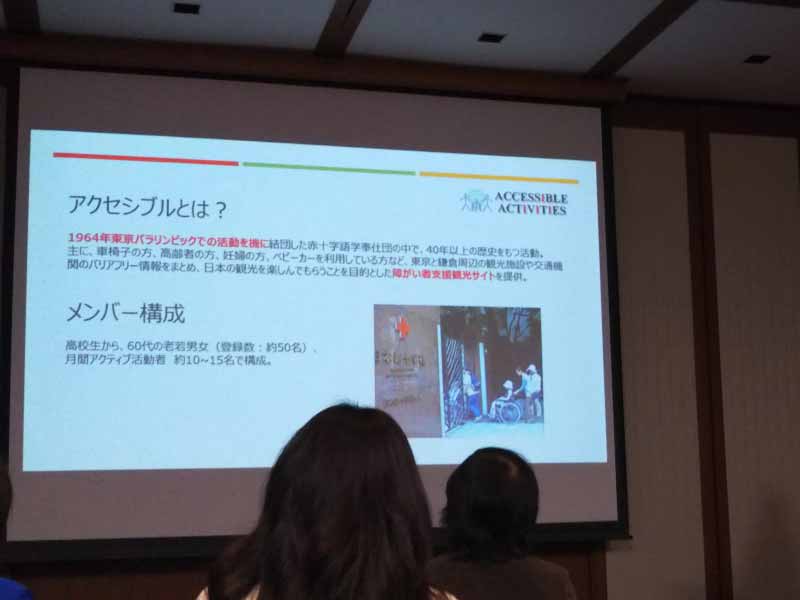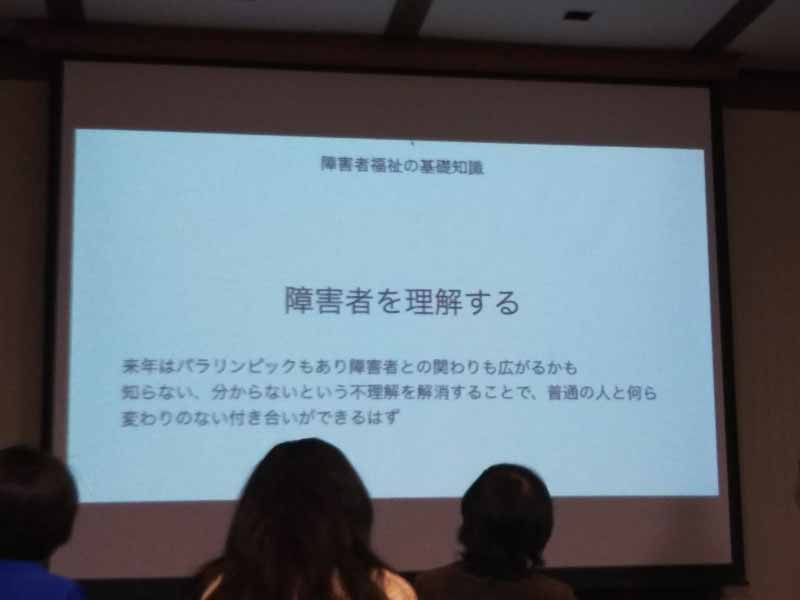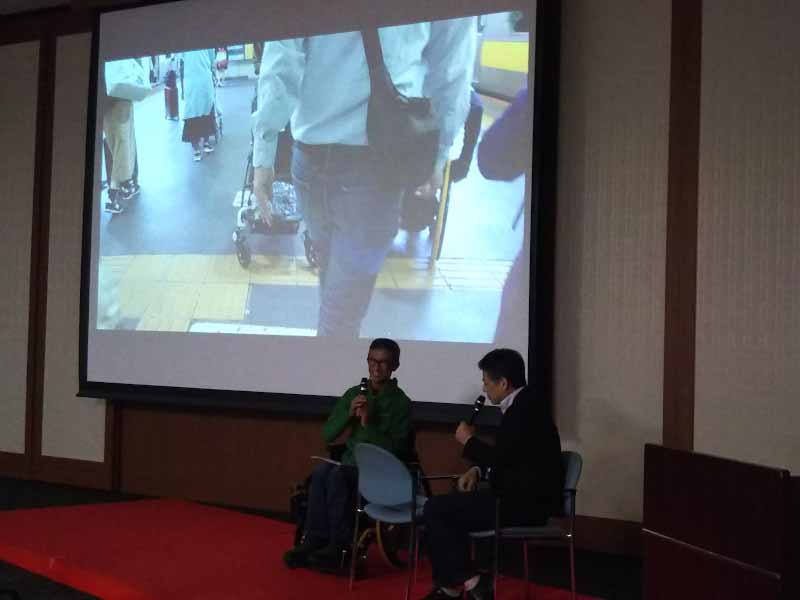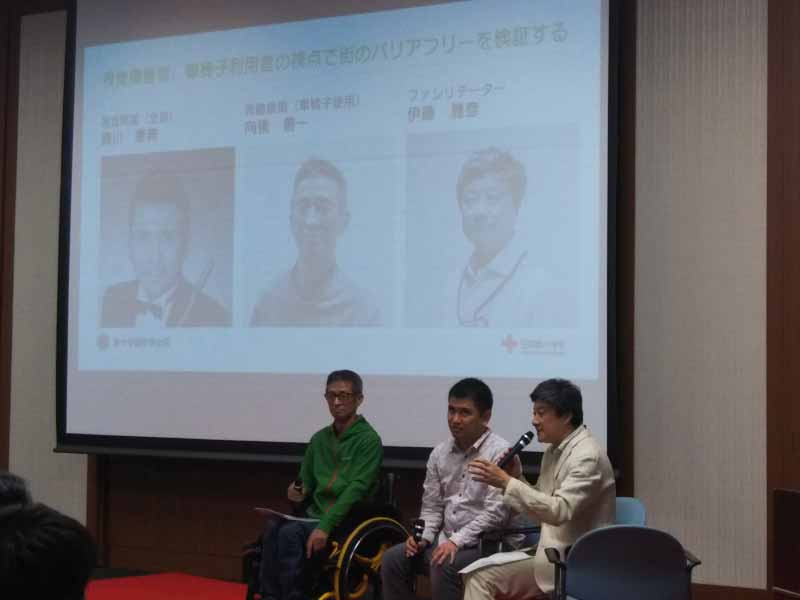On November 10 2019, the “Accessible Tokyo” team took part in the event of the participation programme for the 2020 Olympic and Paralympic Games. Click on the link below to read the introduction of the event.
Session 1: History of “Accessible Tokyo” activities and current accessibility of Tokyo
Introduction of “Accessible Tokyo” activities
We introduced the history of “Accessible Tokyo” activities* including publication of the booklet titled “Accessible Tokyo” in 1977 and development of the website. We also showed the attendees one of the current activities by playing a video where our members climbed Mt. Takao on a wheelchair for an accessibility review. In other words, this introduction outlined the activities that have about 40 years of history. * “Accessible Tokyo” activities are conducted by a group within the Japanese Red Cross Language Volunteers that was organized upon the Tokyo Paralympic Games in 1964.

Basic knowledge of social welfare for people with disabilities
The United Nations and Japan have made approaches toward a better society for people with disabilities. In the session, we told the attendees about the history and classifications of disabilities as well as decent behaviors when communicating with people with disabilities. The following are the communication points one should keep in mind. Do not treat them like children. Do not consider them incompetent. Ask them what help they need before helping them. These points are helpful when our volunteer group guides them around the city. We also explained the meanings of some braille blocks with their photos displayed.

Session 2: Accessibility reviews of Tokyo by a person with visual disability and a wheelchair user – problems for people with disabilities in the city
In the next session, we had a video presentation about the accessibility reviews at Shinjuku Station with Mr. Tsunagawa, a person with total blindness, and with Mr. Kogo, a wheelchair user. In the reviews, our members saw how they used the station, caught a train or used an escalator. We accordingly checked current accessibility and found some problems for them which we would not have been able to notice.
The scene that especially caught my attention was where Mr. Tsunagawa faced some problems at a ticket gate. He took the trouble to touch the automatic ticket gate to make sure whether it worked for IC train cards or paper tickets. Besides, the flap barrier of the ticket gate barred his way when others entered the gate from the opposite side. It would have stayed open if he had been able to notice others and step aside until they passed through. However, he could not see any gates and people around him. He stressed that those problems always happen to people with visual disabilities.

Another scene that caught my attention was where Mr. Kogo faced a problem at the platform bustling with people. He had a hard time getting on a train amid many people getting off. Our members found that it was not easy for his wheelchair to come into the sights of those who got off the train as they had only sights above a wheelchair user in most cases.

The two guests had a panel discussion on their daily life and accessibility at the final part of the session. What Mr. Tsunagawa was concerned about was touchscreens. Most kinds of touchscreens have not been developed yet for people with total blindness. Consequently, they cannot use most of the touchscreens installed in automatic ticket machines at stations and automatic cashier terminals at convenience stores. He said that many people with visual disabilities might be left behind in the digital society where touchscreens are prevalent.


Mr. Kogo asked for equal treatment. Some people tend to look down on wheelchair users. He shared with the attendees his experiences where some people gave him a warning or treated him like a child.
Both of the guests were very positive and active in their daily life. I learned a lot from them. The contents of the event were much richer than I could write in this blog. Instead of showing you the video, I hope I will write blogposts on the accessibility reviews with the photos.
Finally, I would like to share with you a comment from a student who attended the event.
“It was a good opportunity to discover potential dangers and inconveniences for people with disabilities. The video presentation gave me a clear understanding of those problems although some stories or articles have just given me a vague understanding. After the event, I often look around carefully at the streets where I just used to walk through. I became aware of different kinds of inconveniences myself. I’m not sure that my finding of problems will bring about some solutions. However, I hope I can assist a person with disability in case they face a problem. I was able to learn a lot of things through the two events.”
The purpose of the event was to raise awareness of those issues relevant to people with disabilities. Accessibility would be embraced in society if more and more people were to address such issues. Therefore, I feel comfortable that the event succeeded since one of the attendees became aware of them.
